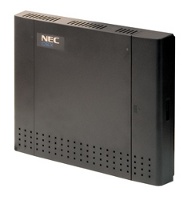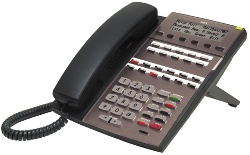Savvy Duck Projects: Phone System VoIP Conversion
 Traditional landlines are expensive, unreliable, and just plain going out of style. So what if you have a building with a business-grade phone routing system built for use with those landlines and want to switch to an internet-based system? Do you have to buy another costly phone box and potentially new phones as well? Not to worry; many of these existing phone systems can be converted for use with the inexpensive Voice over IP (VoiP) internet protocols. I recently assisted in such a conversion at Cascade Health Center in Eugene, Oregon. As you will find out in this article, even though it was possible to perform the conversion, it was a bit of a can of worms.
Traditional landlines are expensive, unreliable, and just plain going out of style. So what if you have a building with a business-grade phone routing system built for use with those landlines and want to switch to an internet-based system? Do you have to buy another costly phone box and potentially new phones as well? Not to worry; many of these existing phone systems can be converted for use with the inexpensive Voice over IP (VoiP) internet protocols. I recently assisted in such a conversion at Cascade Health Center in Eugene, Oregon. As you will find out in this article, even though it was possible to perform the conversion, it was a bit of a can of worms.| Tweet |
Requirements
 Requirements, requirements, requirements. The first thing it is important to do in a project like this is to thoroughly check the requirements. In this case, documentation was scarce, complex, and not very clear, so I didn't end up having all of the requirements right off the bat. I will explain.
Requirements, requirements, requirements. The first thing it is important to do in a project like this is to thoroughly check the requirements. In this case, documentation was scarce, complex, and not very clear, so I didn't end up having all of the requirements right off the bat. I will explain.The system in use at Cascade Health Center is a NEC DSX-40 phone system. The staff wanted to convert it to use VoIP. They were fully aware that I had little experience with this particular system, but were confident of my technical expertise and were willing to learn along with me during this process. It is an entry-level system for small businesses that routes to up to eight phones (upgradeable) and came with an Intramail voice mail card. A few Google searches will readily reveal that an expansion "daugher" board called a VOIPDB can be installed onto the motherboard to enable its use with external "VoIP Trunking" services, which will set up a VoIP phone number that routes through the internet directly to the DSX-40 box. The VOIPDB enables the existing hardware in the box for up to 4 incoming VoIP lines.
The one other requirement I discovered along the way is having a network router robust enough for use with multiple VoIP lines (and of course, internet service fast enough to handle the load). The business had an internet connection which was likely capable of handling the VoIP traffic, but upgraded it anyway just to be on the safe side, and the new service came with a VoIP-capable router.
Upgrades and Incompatibilities
So the VOIPDB card was ordered, and when it arrived I installed it into the box. Installation was a breeze; turn the system off, open the box, snap the card into place, close the box, and start it up. But that is where the simplicity ended. When we started the system back up, it still functioned with the old landline setup (we had not yet set up VoIP trunking), but with the peculiarity that line one on the system showed that it was always in use, and therefore couldn't be used to dial out. When researching this problem, we discovered a poorly-documented requirement that revealed that the VOIPDB daughter board required a firmware upgrade to the DSX-40, as well as some additional configuration of the box's internal settings.
The DSX box at the time was on version 2 of the firmware, and while researching the upgrade, we discovered that it required downloading version 3 onto a Compact Flash card of all things. Compact Flash cards are an older type of data card that have been used in some digital cameras and (apparently) NEC DSX phone systems. So we acquired a flash card and reader, downloaded the software onto it, plugged the card into a slot on the DSX motherboard, and upgraded it. The upgrade process went smoothly, but when we lit the system back up afterward, the voice mail didn't work.
So we spent some time researching the voice mail problem. It turns out that the voice prompts in use on the Intramail card (also a Compact Flash card) were incompatible with version 3 of the DSX firmware. Upgrading it required downloading the DSX remote administration software. We were going to have to do that anyway to configure the VoIP trunking, so we installed the software onto the business's server and upgraded the prompts. This didn't quite work right, and as of the writing of this article, we are still fussing with the voice mail in cooperation with some other people in the business in an attempt to solve the problem.
Configuration Woes
 The Intramail card wasn't the only problem we ran into at that point. NEC is kind enough to provide step-by-step instructions on setting up every SIP trunking service that is compatible with the DSX-40 box. After ordering the service and following those instructions, things broke down again. We could call out, but could not call back in. We tried those instructions again and again ad-nauseum with no effect. So we got into some of the other configuration settings that were either poorly documented or difficult to understand to say the least. The DSX-40 is a very advanced, functional, and feature-rich system, but its configuration database is obscenely complex. However, after a lot persistence and a lot of trial and error, we finally found the problem: there was a missing setting that was not specified in NEC's instructions, not obvious, and the entry field did not even have an associated title. We were fortunate to stumble across the setting at all. However, after finding that, everything finally worked.
The Intramail card wasn't the only problem we ran into at that point. NEC is kind enough to provide step-by-step instructions on setting up every SIP trunking service that is compatible with the DSX-40 box. After ordering the service and following those instructions, things broke down again. We could call out, but could not call back in. We tried those instructions again and again ad-nauseum with no effect. So we got into some of the other configuration settings that were either poorly documented or difficult to understand to say the least. The DSX-40 is a very advanced, functional, and feature-rich system, but its configuration database is obscenely complex. However, after a lot persistence and a lot of trial and error, we finally found the problem: there was a missing setting that was not specified in NEC's instructions, not obvious, and the entry field did not even have an associated title. We were fortunate to stumble across the setting at all. However, after finding that, everything finally worked.Conclusion
If you want to switch your business phone system to a cheaper, more modern VoIP service, it is often possible to do it without spending thousands on a brand-new phone system. In fact, if your current phone system turns out not to be compatible, it's also possible to build a new one with a capable computer and phone routing software such as Asterisk. However, the process may be frought with various problems and inconsistencies, and can be a hassle to say the least. If you want to go this route, either find someone with prior experience with the system to help you out, or make it a weekend project to learn the system yourself before getting started. It could save you a world of trouble.
Thank you to the wonderful people at Cascade Health Center for their patience during this process and for letting me write about the experience.
Eugene - Springfield - Florence - Oakridge - Cottage Grove
Copyright © 2010-2025 Savvy Duck Computers, LLC
Terms and Conditions Privacy Policy
Copyright © 2010-2025 Savvy Duck Computers, LLC
Terms and Conditions Privacy Policy

